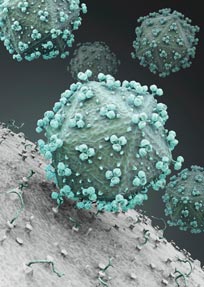Gluten not a bread-and-butter diagnosis
Internists have to sort through the symptoms of gluten sensitivity to confirm a diagnosis. Excluding celiac disease and wheat allergy is essential, as is managing the patient's expectations and lifestyle.
Where gluten sensitivity is concerned, internists are frequently faced with patients who are not seeking a diagnosis, but rather dictating one as they walk through the door, said Alessio Fasano, MD, director of the Center for Celiac Research at Massachusetts General Hospital in Boston.
These patients have been suffering various gastrointestinal and other symptoms, sometimes for years, without any clear-cut answers, said Dr. Fasano. “They tried the diet,” he said. “They felt better. And they want to go to the internist to confirm the diagnosis. And the internist says, ‘Well, slow down a little bit.’”

The result can be an angry patient and a difficult road as the internist tries to identify the source of the patient's symptoms, Dr. Fasano said. But sorting out and excluding other potential causes, including celiac disease and a wheat allergy, are crucial before moving forward with a gluten-free diet, he said. Patients who do proceed, moreover, will likely need help to stay healthy and gluten free without gravitating toward high-fat products or shorting themselves on fiber and vitamins, said Dr. Fasano and other experts in the burgeoning and somewhat confounding area of various gluten-related disorders.
To provide physicians with better guidance, leaders at the North American Society for the Study of Celiac Disease are discussing the development of a position statement, said Sheila Crowe, MD, FACP, a gastroenterologist and professor of medicine at the University of California San Diego School of Medicine. Dr. Crowe also serves as a councilor-at-large at the society, which formed in 2012.
“But it's not going to be based on a wealth of information at this time because the studies are limited,” she said. “And we don't understand the basic mechanism of the condition.”
Gluten-free trends
Gluten sensitivity—technically called nonceliac gluten sensitivity to distinguish it from the autoimmune disorder—is at this point a diagnosis of exclusion, Dr. Crowe said. “We don't have criteria,” she said. “We don't have lab abnormalities that are consistent, so we really have no way to have diagnostic criteria yet. There's no specific histology, no specific antibodies, no specific genetics that we have identified.”
Also, efforts to capture prevalence have resulted in widely varying estimates. One recent analysis, which looked at data from the National Health and Nutrition Examination Survey (NHANES), found that 0.548% of individuals reported currently adhering to a gluten-free diet. If what an individual eats aligns with gluten sensitivity, then the prevalence is roughly half that of celiac disease, said the researchers, who reported their results in 2013 in the Scandinavian Journal of Gastroenterology.
Dr. Fasano, a pediatric gastroenterologist and author of the book “Gluten Freedom,” estimates a much higher rate based on diagnoses at his center. He believes that 6% of the U.S. population experiences some degree of sensitivity to the gluten protein that can be found in wheat, rye, and barley. (See the Table, “Sorting the ‘gluten 3’”.)
Regardless of the precise figure, restaurants and food product manufacturers have rushed to fill a perceived and growing need, with “gluten-free” labels seemingly ubiquitous in recent years. By early 2013, 1 out of every 3 U.S. adults reported trying to cut back on or eliminate gluten consumption, according to the market research firm NPD Group.
To some extent, the seeming surge in patient complaints is due to pent-up demand, with some people coping for many years with mysterious symptoms, Dr. Fasano said. But he also echoed other celiac experts who say that proselytizing by celebrities and online sites has likely inflated the numbers of people trying the dietary approach.
The good news, reported by the National Institute of Diabetes and Digestive and Kidney Diseases (NIDDK), is that gluten sensitivity isn't believed to pose the potential long-term harm of celiac disease, in which the abnormal immune system response can damage the small intestine, boosting the risk of small-bowel cancer and preventing the proper absorption of food and its nutrients.
But on an individual level, patients with gluten sensitivity can report gastrointestinal problems, headache, nausea, and other symptoms that feel more immediately and personally debilitating, Dr. Crowe said. “These are people who smell gluten and can be symptomatic,” she said.
The body's response can be nearly immediate, Dr. Fasano agreed. “They can tell you, ‘I ate X. And 2 hours later, I was totally out of commission.’”
Diagnosing by exclusion
The first step toward diagnosing nonceliac sensitivity is to rule out other causes of gluten reaction, specifically wheat allergy and celiac disease, Dr. Fasano said. He participated in a consensus paper, published in 2012 in BMC Medicine, that strived to classify gluten-related disorders.
An allergy to wheat should be suspected if the patient already has other food allergies and reports gluten intolerance, said Ciaran Kelly, MD, medical director for the Celiac Center at Beth Israel Deaconess Medical Center in Boston. The symptoms also vary somewhat from those of celiac disease, he said. “People with food allergies will often have sensations of numbness or tingling when they are exposed to the food, or they may develop an itchy rash when they are exposed.”
With bloodwork or a skin test, a wheat allergy can be ruled out, Dr. Kelly said. But it's far more difficult, given the overlap in symptoms, to determine based on patient history alone whether the underlying cause is celiac disease, nonceliac gluten sensitivity, or irritable bowel syndrome, he noted. The last of those 3 possibilities, like gluten sensitivity, is only diagnosed by excluding other possibilities, and there is no biomarker to test for, he said.
“There are many who believe that it [nonceliac gluten sensitivity] is simply a subset of patients with irritable bowel, and certainly the symptoms can be quite similar. And then there are others who believe that it's a distinct disease entity,” Dr. Kelly said, adding that he doesn't place himself into either group.
Celiac disease is a frequently missed diagnosis, according to 1 study. The analysis, based on NHANES data, reported a prevalence of 0.71% in the United States. The vast majority of those adults, 83%, didn't know they had the autoimmune condition, according to the 2012 findings, which were published in the American Journal of Gastroenterology.
Along with the long-term health risks posed by celiac disease, it's also important to nail down the diagnosis to alert other family members, given its genetic links, Dr. Crowe said.
Primary care doctors can run bloodwork to look for high levels of key antibodies, such as anti-tissue transglutaminase antibodies (tTGAs, also called tTG Abs or tTG IgA). Even if the patient has been avoiding gluten for some months, the test can be helpful, since it can take as long as a year for the antibodies to return to normal levels, she said.
However, antibody results aren't universally predictive, Dr. Crowe said, citing a review of diagnostic studies in the Journal of the American Medical Association finding that the tests miss 1 out of 10 people with celiac disease. If someone is skinny and anemic and has a family history of celiac disease, even if the antibody results are negative, consider referring the person to get a biopsy of the small intestine, she said. Those results, if they show signs of damage, will confirm the diagnosis, according to the NIDDK.
What about patients who insist they've ditched gluten for a year or longer, making it more difficult to rely on the antibody and biopsy results for diagnostic guidance? First of all, clarify what they mean by “gluten-free,” said Michelle Pietzak, MD, a pediatric gastroenterologist at the University of Southern California Keck School of Medicine in Los Angeles. It could be that they are only skipping bread and pasta but are still consuming more gluten than they realize, she said.
If the patient is confirmed as an anti-gluten purist, meticulously reading labels and quizzing waiters at restaurants, another possible step is to test for human leukocyte antigen (HLA) genes, such as HLA-DQ2 and HLA-DQ8, according to celiac experts. It's relatively common to test positive, and the vast majority of those individuals don't go on to develop celiac disease, Dr. Pietzak said. But if the result is negative, “It's unlikely you have celiac,” she said.
Dietary pitfalls
Gluten is not the only substance believed to trigger gastrointestinal miseries. Be sure to ask patients how much bloating they're experiencing, as that is an underutilized question that can help flag lactose or fructose intolerance, said Peter Green, MD, who directs the Celiac Disease Center at Columbia University in New York City. Some researchers have been looking at the relative benefits of a diet that's been dubbed the low FODMAP (fermentable oligo-di-monosaccharides and polyols) diet, so called because it excludes those carbohydrates that are high in fructose, fructans, lactose, and other gas-promoting components.
Dr. Green cited 1 intriguing Australian study in which patients with nonceliac gluten sensitivity were put on a FODMAP-restricted diet. Their gastrointestinal symptoms eased and didn't return when gluten was reintroduced, according to the findings, published in 2013 in Gastroenterology.
If patients insist on staying gluten-free even without conclusive evidence that they need to, saying that they feel better without gluten, the biggest hurdles are financial—gluten-free products cost 2 to 3 times more—and logistical, Dr. Kelly said. “Probably the biggest negative is that it carries a social burden with regards to isolation during social events or while traveling,” he said. “Being on a gluten-free diet imposes a burden on the patient or on those who are preparing food for the patient.”
Someone adhering to a gluten-free diet also should consult with a nutritionist, Dr. Kelly said. Jettisoning gluten will likely also mean lower consumption of fiber and some vitamins, such as the B vitamins, so it's important that the patient take a multivitamin, he said.
Moreover, patients should be advised that even though gluten-free eating is sometimes promoted as a weight-loss strategy, they might actually gain weight, Dr. Green said. To compensate for the lost taste of gluten, manufacturers will sometimes add fat and sugar to gluten-free foods, he said.
But as a general rule, as long as serious causes of symptoms, like celiac disease, are ruled out, Dr. Pietzak doesn't see any health downside to allowing patients to restrict or eliminate gluten. As the condition is better understood, perhaps one day what now falls under the umbrella of nonceliac gluten sensitivity will be isolated into different diagnoses depending on whether the symptoms are primarily gastrointestinal or neurological or otherwise in nature, Dr. Pietzak said.
Meanwhile, doctors and researchers are still trying to get a better grasp of the diagnostic underpinnings. “The problem is that when you go gluten-free and you feel better,” Dr. Fasano said, “this is going to be due either to the placebo effect or because you're truly gluten sensitive.”
He's involved with a multicenter study that's taking a double-blind approach to determine the real-world effect of gluten. Researchers are randomizing 120 “gluten-sensitive” adults to either a gluten-rich diet or a rice-starch placebo alternative in the hopes of identifying key biomarkers. The study, which began in 2011, is projected to wrap up enrollment by year's end.





